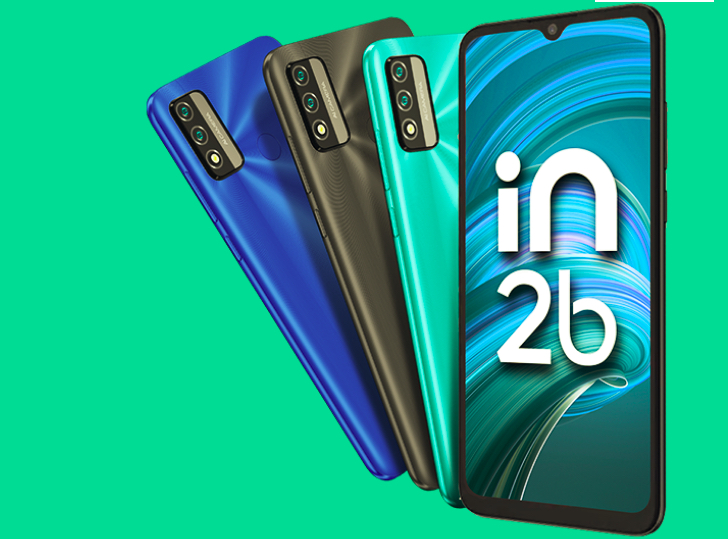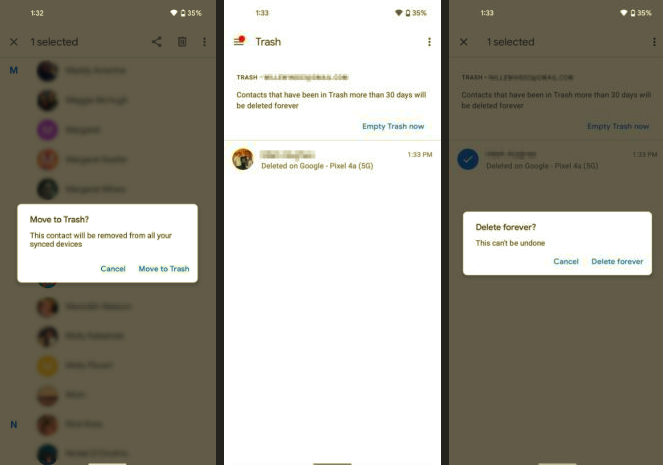Last night, at an event in New York, Motorola unveiled one of the most hyped smartphone of 2013 – the Moto X. While nearly everything was known about the Moto X before its official launch, there were still a lot of interesting tidbits that came to light after the phone’s announcement and initial hands-on.
To help you catch up with all the Moto X news out there, here is an exhaustive post explaining why and what makes the Moto X so special.
Specs
- 4.7-inch RGB OLED display with 720p resolution
- 65.3mm x 129.3mm x 10.4mm
- 130 gms
- Moto X8 mobile processor
- 16GB of internal storage with the 32GB variant being exclusive to AT&T. 50GB of free storage on Google Drive for 2 years
- 2GB of RAM
- Wi-Fi b/g/n/ac, NFC, LTE, Bluetooth 4.0 LE, GPS, GLONASS
- 10MP ClearPixel camera, LED flash, 1080p HD video recording.
- 2MP front-facing camera. 1080p HD video recording.
- Android 4.2.2 Jelly Bean
Motorola X8 Mobile Processor
First and foremost, don’t get fooled by the Moto X specs. While they may seem mid-range, the phone packs more than enough grunt to run Android 4.2.2 smoothly. While the Moto X8 mobile processor is not a custom made processor from Motorola, it does make use of the company’s expertise in DSPs to offer the handset a unique advantage. The X8 is an “eight-core” chip consisting of packs 2 Krait 300 cores running at 1.7GHz, four GPU cores (Adreno 320), and a dedicated contextual and language processor. The use of two dedicated DSPs help the Moto X in offering some unique features, about which you can read below.
Motorola has also made sure that the dual-core Krait processor and 2GB of RAM are more than enough for a stutter-free operation even under heavy load on the X. A point to note is that the Krait cores on the Moto X are the same as seen on the One and the Galaxy S4, and not the one being used on the Nexus 4. The Krait 300 cores have a higher efficiency, better thermal and a tweaked architecture for better performance compared to Krait 200.
The Adreno 320 GPU is also the same as seen on the Nexus 7, Galaxy S4, HTC One and the Nexus 4. However, since the GPU has to push a lower resolution display on the Moto X (720p), it actually performs better in benchmarks and in real life compared to the One and S4 (1080p). The use of a dedicated contextual and natural language processor also help the Moto X in delivering some unique features without affecting battery life or performance.
In some CPU bound benchmarks, the Moto X will lag behind the One and the Galaxy S4, due to the lack of two additional cores. However, in real life, the Moto X is as smooth as the One, and even smoother than the Galaxy S4, thanks partially to the near stock build of Android 4.2.2 that it is running.
The flip side to using a dual-core CPU, however, is that it should theoretically lead to a better battery life. This is because under heavy load there are two less cores on the Moto X to drain power, and the use of dedicated DSPs for certain features help in improving efficiency and battery life.
Design
Motorola has laid a great emphasis on the Moto X design. While at first glance the device might look like any other Android phone, Motorola has made sure the X has a very ergonomic design. Even though the X comes with a 4.7-inch screen, it is much smaller in size than other 4.7-inch sporting handsets like the Nexus 4 and the HTC One. The smaller size of the X definitely helps in making the handset easier to use with a single hand.
The back of the X also has a highly tapered design for ergonomics reasons. The 10.4mm thick bulge in the center tapers off to around 6mm at the edges, which help the X to easily slip into your palm. The highly curved back also required Motorola to go with a custom designed battery so as to not waste any precious real estate inside the device.
On the front, Motorola has managed to taper off the glass inside the plastic edges. This makes swiping across the X a breeze, and also reduce bezel space to a minimal. Surprisingly, the Moto X also comes with a water-repellant coating, which might not be as good as water-resistant, but is still better than nothing.
The kevlar coated build of the X has a typical Motorola feeling to it, and feels quite sturdy. While the front of the Moto X will be available in black or white, users can chose the back cover color and side trim accents from a variety of colors.
Software
The Moto X runs on a near stock version of Android 4.2.2, and not Android 4.3 as many expected. The handset, however, comes with a lot of unique features, that make it stand apart from the crowd and actually seem useful unlike the plethora of S-branded features on the Galaxy S4.
First in the list of software features on the Moto X spec sheet is Touchless Control. Thanks to the natural language processor that works in conjunction with the ‘Crystal Talk’ and is always listening to your voice, and automatically triggers Google Now as soon as it hears the magic phrase “Ok, Google Now”. When you first start the Moto X, you will have to go through a simple tutorial before enabling this feature. Once you have gone through the tutorial, the phone will only activate on your voice via the phrase, and no one else.
Second is Active Display, which makes use of the two low power cores and the OLED display to display your notifications in a unique style. Instead of using a traditional notification LED, the top part of the Moto X display will “breathe” when you have a new notification and the phone is kept on a table with the display facing up. These notifications are interact-able, and users can directly open the app from these notifications. For all you privacy freaks out there, Motorola allows you to control which all apps can display their notification on the lock screen. This feature will also work with third-party apps and services.
Another unique feature on the Moto X spec sheet is the Quick capture camera gesture. Thanks to a dedicated sensor, Moto X users can quickly fire up the camera using a simple screwdriver like gesture. Sadly, in real life, this gesture can be a hit or a miss.
Lastly, using the contextual processor and the sensors on-board, the Moto X is actually trying to act like a ‘smart’phone. The handset will automatically activate Car mode when you are travelling in a car at speeds of greater than 55MPH.
http://youtu.be/xXyCbrdQEyA
To offer enhanced usability and make using smartphones easier for newbies, Motorola is also offering a plugin for Chrome that will automatically sync all your device notifications with the browser, including the ability to reply to text messages.
Camera
At the back of the Moto X is a 10MP ‘ClearPixel’ camera. A lot has been talked about this camera even before the Moto X was even announced. Basically, while every camera sensor has a dedicated R (Red), G (Green) and B (Blue) pixels, the Moto X camera will have another pixel – C – whose sole purpose will be to take in additional lighting.
The use of a ClearPixel camera will help the Moto X to take much better images especially in low-light. Apart from this, the X has all the usual camera tricks including 1080p HD video recording, an LED flash, HDR, a 2MP snapper in the front with HD video recording and more. The camera UI has also been tweaked by Motorola to offer simple and quick access to some of the commonly used settings. Sadly, the Moto X camera app does not include the ability to take Photospheres.
Connectivity
As expected from any smartphone nowadays, the Moto X is fully loaded when it comes to connectivity. Not only does it include Bluetooth 4.0 LE, GPS, GLONASS, NFC, it also includes ultra fast Wi-Fi b/g/n/ac. Since the Moto X will be available on a variety of networks, it will come in different variants which will include support for LTE. There will also be a secondary LTE antenna on the Moto X to help improve LTE connectivity and Tx diversity.
Battery Life
One of Motorola’s argument for using a dual-core CPU on the Moto X is battery life. The company hopes that with a beefy 2200mAh battery, and its Moto X8 mobile processor, the Moto X will be able to achieve full 24hours of battery life.
Considering that the Moto X was just unveiled, it is tough to say whether the Moto X will stand true on its claim or not. Nevertheless, even if it does not, the use of a dual-core processors, DSP, and a 4.7-inch 720p display should make sure that the Moto X has above average battery life.
Customization
This is the feature that makes Moto X special. Motorola had teased the Moto X with an “Assembled in USA” tagline, and this is the reason behind it. As the leaks and rumors had suggested, the Moto X is customizable to a certain aspect.
Using the Moto Maker website, Moto X owners can customize the device to their liking before placing an order. The customization options include the ability to select from up to 16 different colors of the backplate, a black or white front facia, up to 7 side trim accents and 16 or 32GB storage space. There is also an option to etch your name or any other desired information on the backplate of the handset before its shipped to you.
That is not all though. At certain point down the line, Motorola will allow users to vote for further customization options using a poll on its Facebook page. The company even intends on offering an option to use a wooden backplate for the device sometime in Q4 of this year.
Now, comes the heart breaking part. All these customization features of the Moto X will only be available to AT&T users in the United States. On the bright side, Motorola says that the customization exclusivity to AT&T is for a very short period of time.
Price and Availability
The Moto X will be available on all major carries in the United States including T-Mobile, Verizon, Sprint, AT&T and US Cellular. On all the networks, the handset will cost $199 on a two-year contract. The 32GB variant, which will be initially exclusive to AT&T, will be available for $249. Sadly, T-Mobile in the USA will not be carrying the Moto X on their networks. However, potential buyers can always buy the phone from Motorola and use it on T-Mobile’s network.
Apart from the USA, Motorola plans on bringing the Moto X to Latin America and Canada. However, in both these markets, the company won’t be offering any of the customization options. Motorola has also confirmed that it won’t be releasing the Moto X in the United Kingdom. However, Motorola will be bringing a family member of the Moto X to the U.K and other regions of the world, with a lower price point.
Motorola has also announced that it will be releasing a Google Play edition of the Moto X sometime down the line, along with a developer edition. Thankfully, as confirmed by Droid Life, the Moto X will ship with an unlockable bootloader, .
The unlocked price of the Moto X is also not as cheap as many hoped for, with the 16GB version costing $575, and the 32GB version coming in at $625.
Image credits – Android Central, Droid Life and Geek























